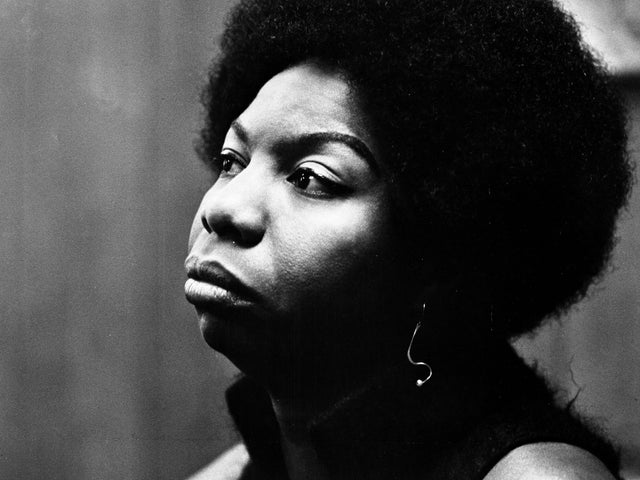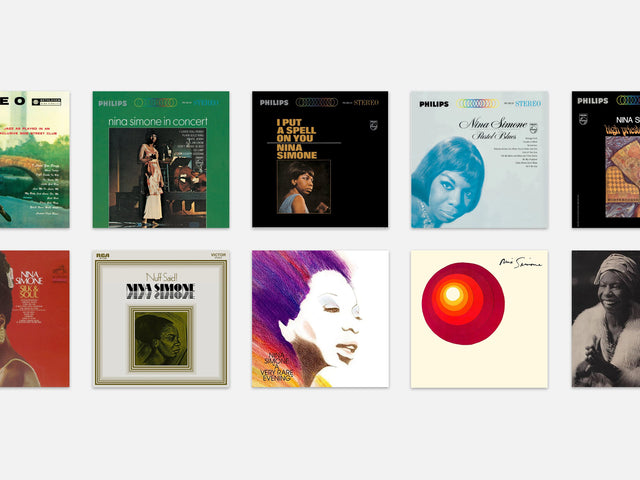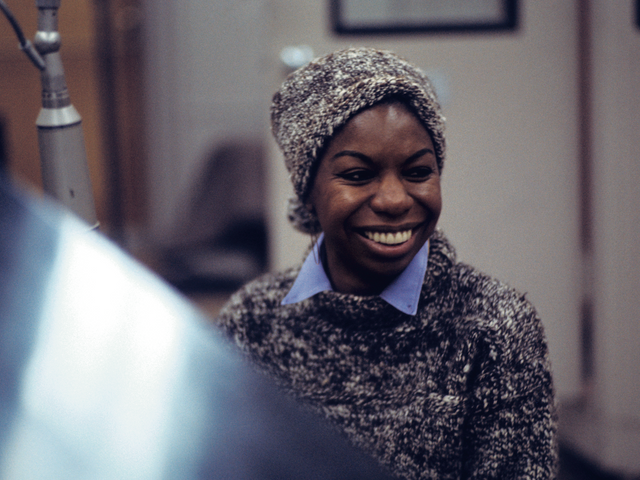Behind the Songs of Nina Simone Sings the Blues
Pouring out through a voice as rich as fertile earth itself, the 12 songs on Nina Simone Sings the Blues feel like they weren’t created, but rather have always existed, incubating beneath layers of soil until Simone decided she’d harvest them to share with the world.
Maybe it’s hard to conceptualize the fruition of these songs because the blues—as a sound, as a genre, as a feeling—are absorbing; they embody complex histories and an encompassing emotional state that spans generations of human conditions. Maybe it’s difficult to imagine the creation of these songs because most of us have never known a world without this momentous 1967 album. Regardless, many of the songs have backstories as intriguing as the musical textures their recordings harbor.
“My Man’s Gone Now” is the most heart-wrenching songs on the album, and a look at its origins is telling. It’s a rendition of a song from* Porgy and Bess*, a 1934 opera by George Gershwin with an undeniable influence on jazz. Louis Armstrong and Ella Fitzgerald released their adaptations of the score in a 1958 album Porgy and Bess, with Miles Davis releasing his version in 1959. The character Serena sings “My Man’s Gone Now” over her husband's body after he was killed in a brawl the previous night. Nina foregoes the operatic style in favor of a lush blues burn that painfully encapsulates its lyrics’ nuanced descriptions of mourning like the eternal absence of the sound of a lover’s footsteps coming up the stairs. What was once an opera piece is now an illustration of blues at its rawest.
The oldest on the album, “The House of the Rising Sun” is a folk song, often referred to as “Rising Sun Blues.” Narrating the tale of a life gone astray in New Orleans, the song’s print date reaches back to 1925, with its origins dating back far earlier. It’s popularity spans adaptations from artists from the Animals to Doc Watson to Bob Dylan to Frijid Pink to Dolly Parton. Nina’s take is fast-paced, upbeat, yet warningly mournful.
Horrifyingly relevant nearly 50 years later, the powerful lyrics of “Backlash Blues” are a poem by Langston Hughes, one of the last protest poems Hughes wrote before his death in 1967. The backlash refers to a rise in racist acts and hate crimes by white people committed in reaction to the US civil rights movement. Simone soulfully spawns Hughes’ words: “When I try to find a job, to earn a little cash, all you got to offer Is a white backlash. But the world is big, big and bright and round—and it's full of folks like me who are Black, Yellow, Beige and Brown.” What was then a deceptively simple call for equality and challenge of systematic oppression remains a poignant reminder of the work we have left to do.
In addition to collaborating with friends like Hughes, Simone drew from her influences like Bessie Smith who released a song in 1931 called “I Need a Little Sugar in my Bowl.” Nina reinvented the tune and changed the lyrics to create “I Want a Little Sugar in my Bowl.” Smith’s original is a bold, honest embrace of lust and sexuality, especially considering it was released 85 years ago. Nina’s slow touch takes its sweet time over smooth piano and the easy plod of cymbals, adding a level of steam that’s nearly sensually incomprehensible, even in a sexually-saturated 2016. She pours coyly: “I want a little steam on my clothes; maybe I can fix things up so they'll go.” Try not to melt; it’s impossible.
While much of the album was penned by the brilliant minds of songwriters like Lil Green, Abbey Lincoln, Buddy Johnson and, of course, Nina Simone herself, many of the tracks on Nina Simone Sings the Blues hold stories of their own, outside the lyrics themselves. Knowing these narratives contextualizes each engulfing line from an isolated feeling into a broader piece of history, no matter how relevant the tunes continue to be.
Amileah Sutliff is a New York-based writer, editor and creative producer and an editor of the book The Best Record Stores in the United States.
Join the Club!
Join Now, Starting at $44Exclusive 15% Off for Teachers, Students, Military members, Healthcare professionals & First Responders - Get Verified!







